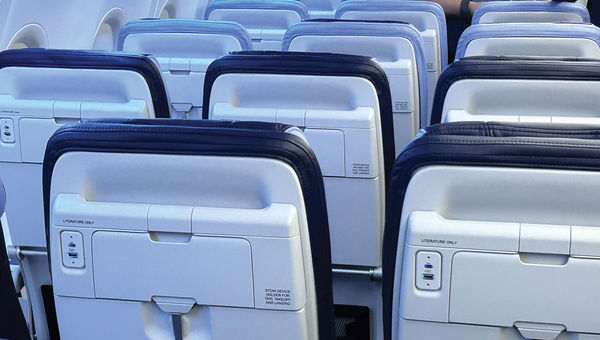In the coming year, low-cost U.S. airlines will ramp up attempts to compete more effectively in the surging premium market dominated by the major carriers.
And as a corollary, Spirit Airlines will attempt to right its sinking economic ship before it is too late.
On the distribution front, airlines could begin to shift away from their NDC efforts if they can't find a way to drive more adoption from TMCs and leisure travel agencies.
Meanwhile, enthusiastic international travelers will enjoy new nonstop connections from the U.S.
The evolution of consumer tastes toward more comfortable flying experiences took hold in the aftermath of the pandemic and has yet to abate. United and Delta, with their mature premium products, have been the largest U.S. airline beneficiaries of that evolution, as reflected by profit margins that well exceed the U.S. industry as a whole.

Southwest will reconfigure its aircraft with extra-legroom seats next year. The retrofitted interiors will be color coded: Extra-legroom seats will be light blue, standard seats deep blue. Photo Credit: Robert Silk
The major carriers will continue to increase their share of premium seats as they take new deliveries in 2025, but some of the most notable changes will come from smaller airlines.
Alaska is the only smaller U.S. airline that reported profit margins similar to United and Delta this year. But next year, flyers will notice increases in first-class and extra-legroom seats on Alaska-branded flights as the airline moves forward with an initiative to reconfigure the interiors of 218 narrowbody planes.
The new year will also see a new premium play from Frontier, which plans to introduce first class-style seating, similar to Spirit's existing Big Front Seat. At Southwest, 2025 will be the year it reconfigures its aircraft with extra-legroom seats (although the airline doesn't expect to begin selling those seats as a separate product until 2026).
Then there's JetBlue, which plans to introduce its first two lounges, one at New York JFK and one at Boston's Logan Airport, late in the year. However, JetBlue's December announcement about the introduction of first-class seats won't play out until 2026.
Still, Bobby Laurie, co-host of the syndicated travel talk show "The Jet Set" and founder of the travel agency JetSetGo, said travelers can now look forward to more premium competition within the low-cost sector.
Conversely, Laurie expects true bargain flyers will be squeezed in 2025 as the share of economy seats declines, fueled also by new Frontier and Spirit fare products that block middle seats.
"You are going to see some of the best deals drop off," he said.

Spirit Airlines will try to chart a course toward profitability when it emerges from bankruptcy in 2025. Photo Credit: Courtesy of Spirit Airlines
For Spirit, 2025 will be a year under the gun. The carrier will enter the new year in Chapter 11 bankruptcy as it goes through a prearranged debt restructuring. But after its expected emergence from bankruptcy late in the first quarter, Spirit will need to quickly find a way to reverse the heavy losses it has been taking since 2020 if it is to remain solvent.
There are other possibilities, however, Laurie said, including a purchase of Spirit by on-again, off-again suitor Frontier.
"My prediction is you'll see a Spirit/Frontier marriage of some sort," he said.
NDC's future
In the world of airline distribution, 2024 was eventful for American's abandonment of its punitive strategy geared toward driving more direct bookings and pulling agencies into the digital retailing world enabled by NDC.
In the absence of American as a disrupter, travel agencies and TMCs are likely to back away from NDC conversions, said analyst Cory Garner, who runs the consulting firm Garner.
"I predict that the market is going to fall asleep and not make those technology investments," he said.
In October, 19.1% of air transactions settled by ARC were NDC-enabled, but OTAs account for the vast majority of those NDC transactions.
Garner said that the way airlines are currently rolling out NDC programs within GDSs, which enable agencies to choose on a fare-by-fare basis whether to book via traditional technology or NDC, won't drive widespread adoption.
He questioned how long airlines will continue with their NDC efforts.
"It's not a bridge to something. It's a bridge to where we are right now," Garner said.
International route map grows
Flyers, of course, are far removed from the industry debate about distribution technology.
But they are likely to notice a surge of new international routes from the U.S. next year, said Sally French, an analyst who follows the airline industry for the personal finance website NerdWallet.
"We are seeing this trend of new flights. Airlines are adding supply to accommodate continued demand," French said.
Leading the way will be United, which will count among its new international destinations in 2025 the first U.S. airline service to Greenland and Mongolia.